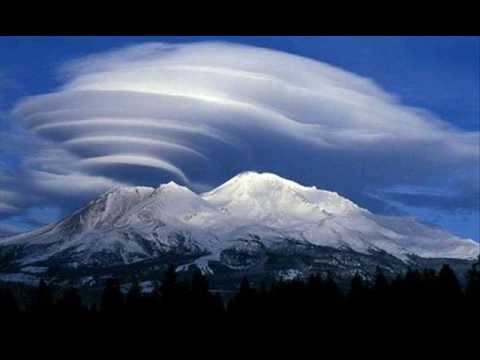A mysterious cloud, which appeared like a UFO, was seen hovering over Mt Etna in Sicily Italy on June 18, at around 4:50 pm. Due to its shape, residents mistook it for a UFO, with numerous people reacting with amazement.
The massive cloud appeared as if suspended over the volcanic mountain raising alarms to the residents of Sicily, Italy who assumed it was alien-like. Images posted on other sites show a big lenticular cloud hovering on top of the mountain.
In an interview with Weather Network, Erin Wenckstern, a meteorologist, said that lenticular shaped clouds form on top of mountains because stable and moist air rises up the mountainside where it crosses the mountain and begins to oscillate up and down like a wave.He also explained that during the oscillations, the air within the crests cools enough to condense and form a particularly rare cloud like the one spotted above Mt Etna in Sicily.
The process normally occurs several times causing a layered lens effect that remains fairly still. Lenticular clouds are often mistaken to be UFOs because of the way they form on top of mountains, a factor that makes them rare to spot.
American Meteorological society defines lenticular clouds, in their glossary of meteorology, as a cloud species with elements that have the form of more or less isolated and smooth lenses or almonds where the outlines are sharp and at times show irisation. Meteorologists, therefore, advise people to rely on science for explanations in cases of spotted anomalies.
In other related news, recent observations at ESO's La Silla Observatory stationed in Chile, have disclosed unexpected changes in the bright spots on the dwarf planet Ceres. Other variations were also noted, leading to a speculated change of their nature .
According to Science Daily, a careful study of the dwarf planet's light shows that the changes appear when it rotates and the spots become brighter during the day. This suggests that the material of the bright spot is volatile and evaporates due to the warm glow of sunlight.
Paolo Molaro, the lead author of the new study at the INAF-Trieste astronomical observatory, said that when NASA's Dawn spacecraft showed the bright spots at the surface of the planet Ceres, they took to study the possible effects from earth. Molaro added that as the dwarf planet Ceres rotates, the spots come towards the earth and recede again, therefore, affecting the spectrum of reflected sunlight reaching the earth.
Watch a video on how UFO-shaped lenticular clouds are formed:



























